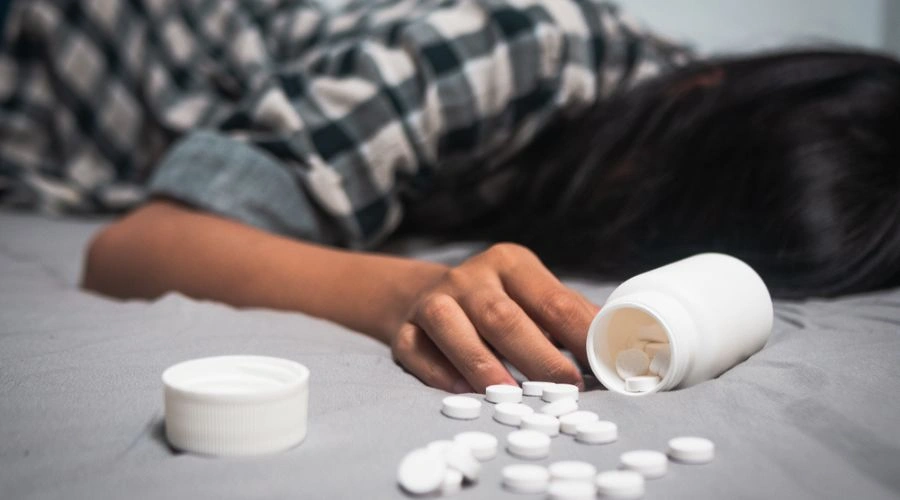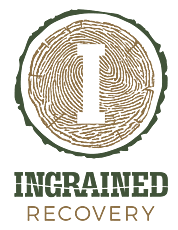Know The Signs, Traits, and Treatment for Xanax Overdose
How much Xanax is too much? Can you overdose on Xanax? These are common questions with benzodiazepine medications, as many aren’t aware of the dangers of these drugs when taken in large quantities.
Let’s be clear here: for those who are prescribed Xanax to reduce panic and treat anxiety, it’s essential to stick to your prescribed dosage.
Using more than the recommended amount can lead to physical dependence and even overdose.
In this blog, Ingrained Recovery helps you identify the signs of Xanax overdose, learn about the adequate Xanax dosage, and provides guidance on how to seek the right treatment options if Xanax has become a problem in your life.
Get Effective Detox and Rehab Options
Find Help At Ingrained Recovery
What Is Xanax and How Does It Work?
Many consider Xanax to be the strongest of all benzodiazepines, a category of drugs that contains medications of various strengths that all impact GABA receptors similarly. But what makes Xanax so effective at treating panic disorder and reducing anxiety?
Increasing the speed at which GABA is released in the brain has strong stress-reducing properties. And Xanax acts especially fast, taking only 15-30 minutes to activate in the body and brain fully.
Xanax should only be prescribed for short-term use because of its potential for life-altering drug abuse. The calming effect that comes with the standard Xanax dose becomes addictive for many, causing the misuse of the prescription, whether recreationally or as a form of enhanced self-medication.
How Much Xanax Is Needed for an Overdose?
How much Xanax causes overdose symptoms? When taken as prescribed, Xanax is safe for generalized anxiety disorder as a quick-acting medication taken on an as-needed basis.
However, misusing or taking a higher-than-recommended Xanax dosage has dangerous consequences.
The maximum safe dose to prevent overdose on Xanax is contingent on the person and various factors such as tolerance, body size, and medical history. Recognizing signs of toxicity and overdose symptoms is central to avoiding a potentially fatal outcome, and is why we have broken down the red flags below.
Understanding Xanax Dosage and Toxicity Levels

The proper dose of Xanax varies depending on the individual and the condition for which the doctor prescribes the medication. For anxiety and other central nervous system disorders, the standard doses fall between 0.25 mg and 0.5 mg, taken two to three times daily.
However, prescribed doses for extreme panic disorder may be higher, as side effects are usually more intense.
How Much Is Too Much Xanax?
Several factors must be taken into account before determining how much Xanax is too much Xanax. The most significant dynamics include age, body weight, metabolism, and general health.
Combining Xanax with other medications, especially alcohol and Xanax or opioids and Xanax, drastically increases the risk of overdose. While it may seem counterintuitive, even combining benzodiazepines and stimulants, such as Xanax and cocaine, can lead to a higher chance of od’ing, as one substance masks the effects of the other substance until the body shuts down.
So, what is the exact Xanax dose that’s considered “too much Xanax?” It’s difficult to point to a specific amount that one individual can handle before Xanax overdose symptoms kick in. Technically, anybody can suffer from an overdose.
However, because the drug leads to physical dependence, the tolerance grows. After prolonged periods of use, long-term users may develop tolerance to high doses.
As a general rule, doses higher than 2 mg in users with no tolerance can have dire consequences that require immediate medical attention.
The Warning Signs of a Xanax Overdose
Staying mindful of the symptoms of a Xanax overdose can help avoid a potentially fatal scenario. Some of the most common signs of an overdose on Xanax include:
- Slurred speech
- Intense sedation
- Confusion
- Loss of coordination
- Blurred vision
- Difficulty breathing
- Muscle spasms
- Seizures
Opioids, alcohol, and other CNS depressants, even if only combined with the prescribed dose of Xanax, can lead to a drastic reduction in respiratory function and heart rate. These are the beginning stages of a fatal overdose.
Who is at the highest risk of a Xanax overdose? Specific demographics exhibit an increased risk of overdose compared to the average person. The following traits may point to higher odds of overusing this drug:
The Most Common Risk Factors for Benzodiazepine Overdose

There are risk factors that enhance the odds of ingesting a toxic dose of Xanax. These factors include:
If Someone is Already Taking CNS Depressants
If you already consume central nervous system depressants like opioids, alcohol, and other drugs, your odds of taking Xanax and overdosing are significantly higher.
A Past History of Substance Abuse or Polysubstance Abuse
Taking Xanax with a history of substance abuse puts you in the high-risk category for Xanax overdose or other fatal drug interactions. A past substance use disorder is attributed to a higher risk for future misuse of any prescription medication.
Other factors to consider include polysubstance abuse that occurs with Xanax and can make the symptoms of overdose either more severe or even harder to detect (when a stimulant is being used, for instance). Some of the most common instances of Xanax polysubstance abuse include:
Co-occurring Mental Health Disorders
People who take other substances to treat depression or other mental health disorders may be more likely to overuse Xanax as an additional coping mechanism.
Improper Use of Medication
Taking altered dosage forms or taking extra after a missed dose are both common risk factors for Xanax toxicity.
If you double or increase your dose and believe you’re suffering an overdose, contact emergency services for immediate medical attention.
Environmental Factors
External factors like access to large quantities of Xanax and peer pressure can also play a role in overdosing on benzodiazepines.
Get Accredited Treatment at Ingrained
Find Help At Ingrained Recovery
What’s Used to Treat Xanax Overdose?
If you believe someone is suffering from an overdose of Xanax, use your local emergency numbers to contact medical professionals.
Transporting the person to a nearby emergency room may be the best option if a hospital is nearby. Time is critical in preventing severe side effects, and even worse, death.
If you believe someone is suffering from a Xanax overdose, don’t hesitate to take the following actions:
Dial 911
Contact emergency dispatchers and provide as much information as possible about the overdose. This includes the dosage of Xanax taken and additional substances involved.
First Aid Measures
If the individual loses consciousness but is still breathing, put them in the recovery position (on their side) to prevent choking. If breathing ceases, start CPR (assuming you’ve been properly trained).
After arriving at the emergency room, there’s a protocol that’s usually followed to treat Xanax overdose cases.
Hospital Treatments for a Benzodiazepine Overdose
Once the person suffering from an overdose is admitted into the emergency room, doctors may administer or prescribe:
- Activated Charcoal. To absorb any remaining Xanax in the stomach after a recent overdose, doctors may prescribe activated charcoal to reverse overdose symptoms.
- Intravenous Fluids. IV fluids help maintain hydration and support organ function during respiratory depression.
- Flumanzenil: This benzodiazepine antidote is used in specific cases to reverse the sedation that takes effect after ingesting Xanax. However, this must be used with caution, as withdrawal seizures are a side effect after long-term Xanax use.
Long-Term Xanax Treatment Options

For those recovering from a Xanax overdose, our rehab programs at Ingrained Recovery offer professional and anxiety-informed counseling, an essential component of treatment, particularly for benzodiazepine users who often struggle with severe anxiety disorders.
Our programs address underlying issues that contribute to misuse and teach healthier coping mechanisms through evidence-proven methods alongside holistic measures.
Preventing Xanax Misuse and Overdose
Preventing the misuse of Xanax begins with education and awareness in several areas. Avoid straying from your physician’s recommendations and never change your dosage without consulting them.
- Education. Be aware of the risks associated with Xanax and the dangers of combining it with other drugs.
- Monitor Usage. Keep track of your dose and be sure that your medication is stored securely to prevent use by unauthorized individuals.
- Provider Communication. Maintain regular check-ins with your healthcare provider to discuss the effectiveness of your medication and any potential side effects that may arise.
For friends and family, maintaining open communication about alternative treatment for anxiety and panic disorder can help avoid Xanax abuse and addiction. If loved ones are already prescribed Xanax, provide support regarding their search for treatment if it becomes an issue of misusing this powerful benzo.
Up To 100% of Rehab Covered By Insurance
Find Help At Ingrained Recovery
Reach Out to Ingrained Today for Xanax Treatment Options
Xanax can be an effective tool for the short-term management of anxiety and panic disorders. However, over-consumption and dependence can occur all to easily with this potent anti-anxiety drug, which brings difficult withdrawal symptoms that can even become life-threatening.
At Ingrained Recovery, we offer dedicated medical detox and inpatient care programs that help our clients safely and comfortably overcome Xanax withdrawal and learn the mental and behavioral health strategies required for long-term recovery success.
If you or someone you care for is struggling to put down Xanax, please contact a member of our admissions team to get proven support options today.

